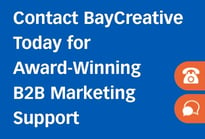Remember Ray Walston's character as the uptight history teacher in the movie Fast Times at Ridgemont High? He stands at the front of the class, reciting dry facts.
Don’t be like that guy—and don’t let your audience be like these bored students. Even in a business environment, this type of dry, information-only approach doesn’t work for training sales teams and channel partners, guiding customers through smooth on-boarding, or showing prospects how to solve a problem.
If the approach you take when creating content for your B2B eLearning tutorials is a dry recitation of the processes, your audience will retain just as much information as Jeff Spicoli did that day in class.
The result: you’ve wasted your time building the content, wasted the audience members’ time because they’ll leave just as uninformed as they entered the training, and wasted customer service representatives’ time because they’ll be forced to deal with customers and partners who are unaware of how to deploy, onboard, or use the solution.
When creating content for eLearning purposes, think back to your childhood. Just as children’s tales teach valuable life lessons with compelling stories that help children retain the story and its message, engaging stories set in the workplace can be a powerful teaching tool.
Study after study has shown that telling a story helps the audience retain more of what they’re being told. Not to mention it captures their attention and keeps them engaged. For business eTraining and eLearning situations, this means that if you can tie the lesson to a relatable business objective that resonates with the challenges the learners might be facing, you’ll capture their attention, unpack complex ideas in a meaningful way, and help them retain the information better.
How To Build Content for B2B eLearning Programs
Training content should start with a clearly defined statement of what the audience will learn and how learning that will benefit them—otherwise, they may not care to engage in the first place. Think of that as your pitch to them. Then build the content of the course around a scenario that relates to the pain points the audience may be experiencing.
Give the content a narrative arc—a beginning, middle, and end. Introduce a main character, someone the audience would recognize from their own workday, and present his/her obstacle. Walk the audience through the problem. As you do so, be sure to relate what’s happening with the protagonist back to the learner. That shifts audience members from passive observers to active participants.
Then move on to how the protagonist solves this problem, which would be by doing what they need to with your solution to solve their pain points. Show the best practices that got him/her the desired results, and show the benefits they get from it. Conclude with a summarization of what was learned.
Include a mix of engaging text, graphics, and video, if appropriate. But be careful: You want your content to be engaging but not superfluous. Only use text, graphics, and video that support the course, and stay narrowly on that path. Don’t add needless side trips that distract from the lesson.
And remember, eLearning offers the opportunity for interactive elements. Hopeful, you get more response than that poor economics teacher.
Does Laying the Foundation Seem Like a Lot of Work? Fear Not!
By building a narrative arc into your eLearning and eTraining content, you create stories that will engage with the audience and help them remember what they learned—and what they need to do going forward.
But creating the content for B2B training takes a lot of upfront work.
That’s where BayCreative can help. We have experts who can guide you through the process, or even take on most of the course creation themselves. If you think it might be time to take create more engaging eContent, let us know.
All the best,
- Team BayCreative -

